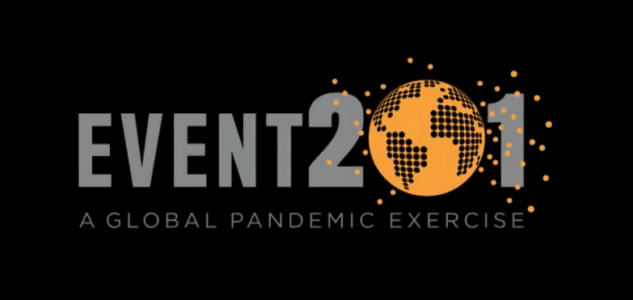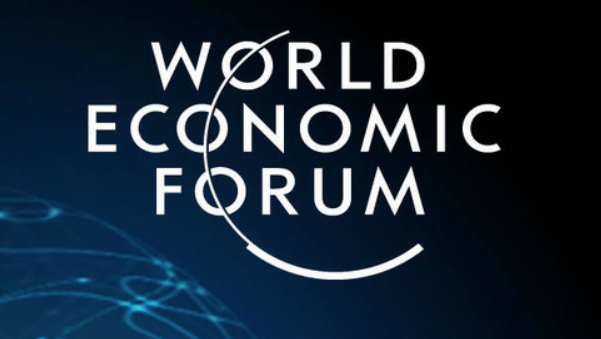A pandemic preparation exercise that was held in New York in front of an audience on 18 October 2019 (2 mos. prior to the COVID ‘pandemic’ in Wuhan. The “exercise players” simulated a global coronavirus pandemic. At least one participant went on to feature in a COVID task force the following year. Bill Gates, whose Gates Foundation co-funded the event, was aggressive in his support of the COVID Lockdown strategy and his promotion of a COVID vaccine and accompanying digital ID as their only exit strategy. On April 12, 2020, he told the BBC, “Now here we are. We didn’t simulate this, we didn’t practice, so both the health policies and economic policies, we find ourselves in uncharted territory.”
Official Narrative
“The policy crisis for the board to consider in this meeting is this. How should national leaders, businesses and international organizations balance the risk of worsening disease that would be caused by the continued movement of people around the world against the risks of profound economic consequence of travel and trade bans?” (18 October 2019)
On 24 January 2020 the Johns Hopkins Center for Health Security issued a “Statement about nCoV and our pandemic exercise”:
“To be clear, the Center for Health Security and partners did not make a prediction (…) We are not now predicting that the nCoV-2019 outbreak will kill 65 million people. Although our tabletop exercise included a mock novel coronavirus, the inputs we used for modeling the potential impact of that fictional virus are not similar to nCoV-2019.”
Predecessors
- Event 201 was the 4th in a series of such exercises, of which the first, Dark Winter, occurred in June 2001, months before the Amerithrax event.
- In 2017 during the Davos World Economic Forum, Gates initiated something called CEPI, the Coalition for Epidemic Preparedness Innovations, together with the governments of Norway, India, Japan, and Germany, along with the Wellcome Trust of the UK. Its stated purpose is to “accelerate the development of vaccines we’ll need to contain outbreaks” of future epidemics
- In September 2019, Bill Gates made a Netflix video which made an eerie imaginary scenario. The video, part of the “Explained” series, imagined a wet market in China where live and dead animals are stacked and a highly deadly virus erupts that spreads globally. Gates appears as an expert in the video to warn “If you think of anything that could come along that would kill millions of people, a pandemic is our greatest risk” threatening if nothing was done to better prepare for pandemics, the time would come when the world would look back and wish it had invested more into potential vaccines.
“Players”
The event was introduced by:
- Anita Cicero, Deputy Director of the Johns Hopkins Center for Health Security
- and chaired by Tom Inglesby (Johns Hopkins University)
The official website listed 15 “players”, although a couple more appear to be seated in the photo (left):
- Latoya Abbott, Risk Management & Global Senior Director Occupational Health Services, Marriott International
- Sofia Borges, Senior Vice President, UN Foundation
- Brad Connett, President, U.S. Medical Group, Henry Schein, Inc.
- Christopher Elias, President, Global Development division, Bill & Melinda Gates Foundation
- Tim Evans, Former Senior Director of Health, World Bank Group
- George Gao, Director-General, Chinese Center for Disease Control and Prevention since 2017
- Avril Haines, Former Deputy Director, Central Intelligence Agency; Former Deputy National Security Advisor
- Jane Halton, Participating as innocent-sounding Board member of ANZ Bank; but has a past as leader of PM John Howard’s murderous People Smuggling Taskforce; was appointed to the Australian National COVID-19 Coordination Commission
- Matthew Harrington, Global Chief Operations Officer, Edelman (PR company)
- Martin Knuchel, Head of Crisis, Emergency and Business Continuity Management, Lufthansa Group Airlines
- Eduardo Martinez, President, The UPS Foundation
- Rear Admiral Stephen C. Redd, Director of the Office of Public Health Preparedness and Response at the Centers for Disease Control and Prevention (CDC)
- Hasti Taghi, Vice President & Executive Advisor, NBCUniversal Media
- Adrian Thomas, Vice President, Johnson & Johnson
- Lavan Thiru, Chief Representative, Monetary Authority of Singapore
Content
The event was introduced by a video featuring “Mike Ryan, the executive director at who and the head of who is emergency program”. The conjectured pandemic was “a SARS-like virus, germinating quietly among pig farms in Brazil before spreading to every country in the world.” The site reported that “the immune-resistant virus (nicknamed CAPS) was crippling trade and travel, sending the global economy into freefall.”
Topics discussed during the event included:
- Roles of governments and social media in Controlling the narrative about the virus, media censorship adviced
- Challenging “conspiracy theories” that it “pharmaceutical companies or the UN have released this for their own benefit”
- Internet censorship, Facebook, Google, LinkedIn, Microsoft, Reddit, Twitter and YouTube intensifying existing efforts to cooperate with Health Departments
- Dealing with public unrest
- Flooding with “correct” information (“developing the ability to flood media with fast, accurate, and consistent information”)
- Surveillance using mobile phone tracking
- Prioritizing drug use, redirecting antiretroviral drugs away from HIV patients
- Stockpiling of medical supplies such as drugs and facemasks
- The impact on the economy and on the virus of travel and trade bans
- Global “coordination” of efforts to mitigate the virus
- Relationships between government and big business
- Bailouts of governments, “too big to fail” businesses and key players
- Establishment of worldwide monetary funds in new dimensions
- Allaying public concerns about vaccines
- Building an international coalition, promotion of industry-led Global Governance
- Enable poor countries’ vaccination with “solidarity funds” from rich nations
- Shift from Continuity Of Government to Business Continuity Management
The following quotes are drawn from a * Machine-generated Transcript of the event (archived):
“Conspiracy theories”
“[M]y team has been monitoring the public response. And on various social media channels and cable networks, there’s been some conspiracy theories that are around about the potential that pharmaceutical companies or the UN have released this for their own benefit… if conspiracy theories like this come up already, so we are on the edge of hysterical reactions.”
(18 October 2019)
“My team has been monitoring the public response. And on various social media channels and cable networks, there’s been some conspiracy theories that are around about the potential that pharmaceutical companies or the UN have released this for their own benefit. So as we move forward, obviously, trust in pharmaceuticals and government is very important at this moment. And so as we move forward with developing the right scenarios, we have to make sure that the public communication is a major part of that because of these conspiracy theories.”
(18 October 2019)
Internet censorship
“Some governments have taken control of national access to the internet. Others are censoring websites and social media content, and a small number have shut down internet access completely to prevent the spread of misinformation. Penalties have been put in place for spreading harmful falsehoods, including arrests. Other countries have taken a more moderate approach and have focused on promoting fact checking efforts and working with traditional media outlets. Yet these approaches are limited in scope. Social media companies report that they’re doing all they can to limit the use of their platforms for nefarious or misleading purposes. But this is a technically difficult problem and false misleading or half true information is difficult to sort without limiting potentially true messages. The bottom line is that members of the public no longer know who to trust. Both the misinformation and the measures to control it have led to a crisis of confidence” (18 October 2019)
“Soft power”
“It’s important that the UN and WHO remain very clear, but when they challenge governments directly, they often get into this issue of sovereignty. And so I think it’s really important not to have that as the only response. I think it’s really critical to think about soft power influence, which is other influentials, who can call up the head of state, or powerful constituencies within those countries. We’ve seen this in the context of mobilizing religious leaders in the context of polio, or specific business leaders where you can soften perhaps a very hard line from government through less more stealthy entry points, rather than trying to punish them through the International Health Regulations or something like that.” (18 October 2019)
Lockdowns
“it shouldn’t be controversial to suggest our response should prioritize both lives and livelihoods. Absolutely. We need to save lives. We all know someone who’s been affected by cats. But we literally cannot afford a heavy handed response that suffocates our economy. pragmatism is a wise choice. I mean, what exactly are the risks and benefits of slowing air travel of staying home from work, closing schools, disrupting supply chains, interfering with our reliable channels of communication and news? Sure, some of these steps can help slow caps but often only most – 3:00 – Generally and with serious costs, when this is all over some families, some cities will have suffered more from our interventions, then from CAPS.”
(18 October 2019)
Social unrest
“The world saw large scale protests and in some places riots, people were angry about the lack of access to health care and medicine, as well as government’s inability to protect them from the disease. This led to violent crackdowns in some countries and even martial law. political upheaval became the rule across the globe. Public lost trust and their respective administrations, several governments fell, while others were desperately striving to hold on to power. This spurred further crackdowns, attempt to control media messaging originally aimed only at health related misinformation became used increasingly to quash political dissent.” (18 October 2019)
“Creepy coincidence”?
News.com.au termed it a “creepy coincidence” that it simulated a global coronavirus outbreak which so closely foreshadowed the ensuing 2020 COVID-19 Pandemic.
Jane Halton, who participated in the event was appointed in March 2020 to the Australian National COVID-19 Coordination Commission.
Reporting
As of March 2020, Wikipedia reported that “The exercise illustrated areas where public/private partnerships will be necessary during the response to a severe pandemic in order to diminish large-scale economic and societal consequences.”
Sources: Wikispooks





